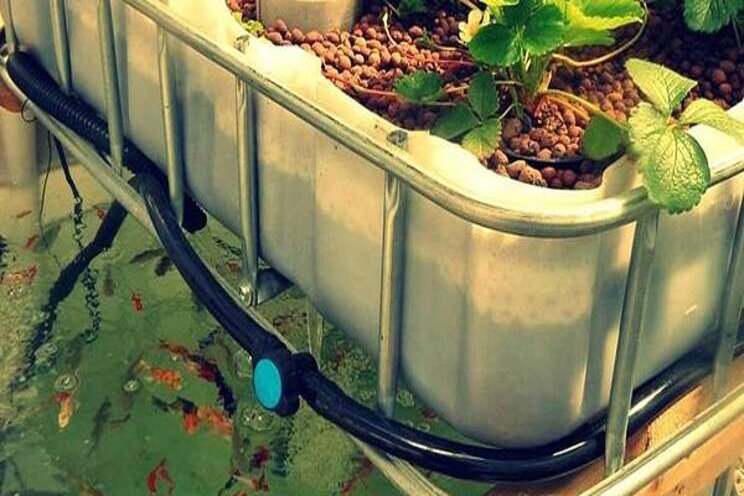DIY small aquaponics
Added on 17 September 2020

Aquaponics Overview
The premise of aquaponics is to use wastewater from a fish tank to provide nutrients for hydroponic vegetable production. In turn, the water is filtered as it passes through the hydroponic beds, making it safe to return to the fish tank in a closed-loop system. Fish food and electricity are the main inputs required, but growing some of the fish food and using a well-insulated greenhouse elevate aquaponics to a truly sustainable endeavor.
Tank and Growing Bed Options
You can use large plastic trashcans, 55-gallon barrels and other food-grade containers as improvised fish tanks. Build rectangular wooden boxes; line them with pond liner, and fill with pea gravel to use as hydroponic grow beds. PVC pipe with 1/8-inch holes drilled in it makes an efficient system for delivering the water evenly to the beds after it is pumped from the fish tank. The beds need an area free of gravel at one end to house a pump that returns water to the fish tanks.
A Homemade Greenhouse
A PVC hoop-house makes a warm home for your aquaponics system, creating the conditions for the fish and vegetables to grow year-round. Pound two rows of 4-foot rebar stakes into the ground every 4 or 5 feet, leaving 2 1/2 feet above ground to slide the ends of the PVC on, forming a tunnel of hoops. One-inch PVC makes a fairly rigid structure. Spread a large sheet of 6 mil plastic over the structure, and use 2-by-6-inch boards to weigh it down on the ground.
Fish Culture
Numerous fish species can be produced in aquaponics systems, but tilapia and catfish are the most forgiving. Stocking one fish for every 5 gallons of water is a reasonable rate for beginning aquaculturalists. The water needs to be aerated 24 hours a day to provide enough oxygen for the fish. As long as the volume of the grow beds is equal to or greater than the fish tanks, they should provide adequate filtration of the fish waste. Place the pump at the bottom of the fish tank so the solid waste is delivered to the grow beds every time the pump turns on.
References
Crop King: Aquaponics and Aquaculture
About the Author
Brian Barth works in the fields of landscape architecture and urban planning and is co-founder of Urban Agriculture, Inc., an Atlanta-based design firm where he is head environmental consultant. He holds a Master's Degree in Environmental Planning and Design from the University of Georgia. His blog, Food for Thought, explores the themes of land use, urban agriculture, and environmental literacy.
Source: Homeguides
Photo Courtesy of Go Green Aquaponics
Source: Homeguides
More news















